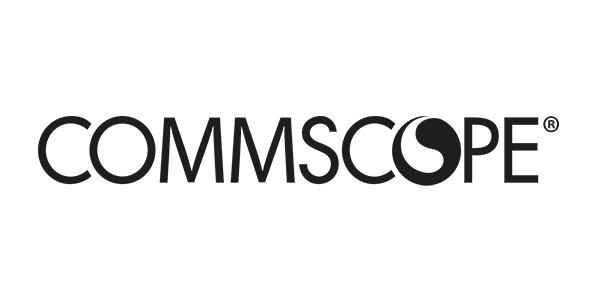How to use data-driven insights to improve market orientation
Market orientation is a marketing philosophy that put consumers at the heart of marketing. It is all about creating products and marketing materials based on the needs and desires of customers.
Sounds obvious right? However, a lot of conventional marketing focuses on key selling points for existing products rather than developing products that have the features that are what your target audience wants.
Established businesses such as Amazon and Coca-Cola have used market orientation to expand their products and improve services. In turn, this has helped them grow their business and become companies known for delivering top quality products that their customers love.
Amazon started off as a bookstore but is now the largest online retailer, cloud infrastructure provider and leading TV producer. It stays at the forefront of innovation by focusing on customer needs and delivering products that simplify people’s lives.
You are not your customer
All too often, marketers and executives for tech companies think that their personal experience with their brand is the same as that of their customers. Decisions are then made on what will make you happy and focus on the details that are important to you. However, you are not your customer. Your customer will have different needs, wants and desires.
Tech marketers can fall into the trap of false-consensus. This refers to when we overestimate the number of other people who share our views, beliefs and tastes.
Rather than focusing on your own experience with your brand, you need to become customer focused. This is especially important in B2B technology. Speak to your customers, get data about their interactions with your brand and start to embrace the marketing orientation philosophy.
Customer needs over product features
B2B tech companies often get bogged down in the small details of their products when marketing. A lot of time and development goes into your product, and it’s like your baby. You want to show off every little detail that is important to you.
Rather than focus on the specific features of your product, you should think about how those features meet the needs of your customers. Harvard professor Gerald Zaltman says that humans make 95% of their purchasing decisions based on emotion.
Your product features may be what set you apart from your competitors, but your customers may not have the technical knowledge that you do. Marketing your product features will not convert customers, think instead about how these features help them achieve goals or make their life easier.
It’s all well and good saying you need to take a customer-focused approach to marketing, but just how can you put market orientation in place?
Market orientation involves a lot of research. Studying customer interactions can lead to insights about their needs and desires, as well as personal preferences. Data analysis may also be employed to reveal trends and customer behaviour.
Don’t focus on the product features, tell a compelling story
Where can you find the customer data you need?
Customer data is everywhere. In the era of big data, it is simple to find and collect customer data. However, the complicated part is knowing what data is useful and what data you can trust.
For the past century, if you wanted to know what your customers were thinking, you had one option–ask them. These days, with customers all leaving a digital footprint online, you can gather more accurate data, which can then positively impact your marketing decisions.
Beware of survey data
Survey responses are littered with bias. They were once the most effective way of gaining insights into your customers wants and need. However, they are not as accurate as many marketers assume.
There is a science to writing survey questions. However, even the most thought over survey questions can have biases in them. The biases can also be difficult to spot, leading you to use the data thinking it’s accurate. Using bias data in marketing then leads to ineffective campaigns, and you are left stumped at where you went wrong.
Examples of bias in surveys
Social conformity
Respondents are more likely to exaggerate their answers if it is conforming to something that is socially acceptable. For example, sustainability is a common topic these days, with everyone feeling they should do their part.
This goes double when you are working in tech, and creating products where the manufacturing process requires a lot of energy. Through surveys, you may be led to think that your customers care more about this than they actually do. In turn, this could lead you to improve in this area, when another area of your product could have been changed that more accurately aligned with your customer desires.
Agreeability
Survey respondents often lean towards being agreeable. They will often respond positively to almost any question you pose to them. To avoid this agreeability in your survey responses, you should try to avoid yes-no answer questions altogether.
Mindset
“Think about when you set up our CRM in your company. How easy was the installation?”
“Overall how satisfied are you with our CRM?”
Mindset carries on over questions. In the first question you have asked about software installation, in the second, overall satisfaction. If you use questions like this, you will have unintentionally put the respondent’s mindset into thinking about installation. They will then give a bias answer to the second questions because they will put more weight on their installation experience in their overall satisfaction.
It’s not just the questions themselves that will lead to bias. Respondents will go into a survey with a certain mindset already. For examples, a study conducted by the NCBI showed that overall, respondents who are more satisfied are more likely to respond to surveys. People who are less satisfied are often less likely to respond to surveys. Even with a large pool of respondents, you can end up with bias because your respondents are all in a more positive mindset which will impact their answers.
Don’t represent the whole market
Surveys are sent out to a specific group of people. They are your customers or a panel. This limits your insights as you have no responses from potential customers you may want to target. Surveys do not give you a clear picture of how the whole of the market is behaving so your decisions are influenced to only address the needs of a few people.
There are many ways you can get inaccurate data through survey responses. However, surveys are not the only option for obtaining customer data to influence your market orientation.
The secrets in search intent
Google searches give marketers and tech companies a new way to get insights into their customers. Your customers will tell Google things that they wouldn’t tell anybody else. Google searches essentially give you a window into the way people are thinking.
Your customers will type things into the Google search bar that they wouldn’t share with friends or family, or your survey. Google conducts 63,000 searches a second and data around these searches provide honest insights and paint a different picture of human behaviour than you might expect.
Harvard trained economist, Seth Stephens-Davidowitz, has looked into Google search behaviour and found it can accurately predict a lot of human behaviours. In one of his examples, he explains, if you surveyed people in America, asking if they were racist, almost no one would respond “yes”. However racist searches are happening on Google by Americans every day. He then put this data onto a heat map showing where the highest volume of racist searches was coming from. These areas were also less likely to support Barack Obama versus other democratic presidential candidates and pay African Americans less than their white counterparts.
You’re probably thinking “this all sounds really interesting, but how does it relate to marketing my tech company?”
You might not have access to all of Google’s data but they do share a fair amount of it that can be used to help your market orientation.
Missing the target: have you gone overboard on customer segmentation?
Tools you can use to gather data
Google Trends
With data compiled from Google searches, Google trends can tell you the popularity of certain search terms.
One of the great things about Google trends is that it stops search terms from being ambiguous. For example, if you type the word “Go” into Google trends, it will give you various options such as the programming language or the game.
You can use the data from Google to track tech trends and identify new markets. As search terms become more popular this can help you assess where to prioritise your marketing efforts and move into these new markets.
Keyword research
Keyword research can help you learn about your customer’s interest. It can also help you understand the search intent, by looking at long-tail keywords. Every customer is different and will have their own interests. Keyword research can help you establish the interests that searchers have, that you are able to meet, and then create targeted content for this audience.
PPC ad campaigns
One of the best ways to get customer insight is through PPC ads. This data will be specific to your company and product, and will be only in reference to a user who have been shown, or clicked on your ads.
Your PPC campaigns should run for a minimum of 6 months to gather up a good pool of data. From this you can look at how well various headlines, content and keywords have performed. You can look into your search query reports and see exactly what people are searching for so you can create tailored content for these search terms.
Using the data you’ve gathered
The data you have gathered will be invaluable in your content marketing campaigns and in your market orientation. You can use this data to understand what your customers are searching for and what the intent behind these searches are.
You will be able to see where you can improve your product or services, and where you can create content to address your customer needs. This data will allow you to create content that your audience actually wants to read, rather than what you think they want to read.
Great content and improved products that have put the customer at the centre of their change will improve your customer retention and engagement on your website, social media and email list.
Want to know more about using keyword data and PPC results to gain a better understanding of your customers’ preferences? Get in touch: [email protected]
Author:

![Create the ideal white paper in eight weeks [infographic]](https://www.futuritymedia.com/wp-content/uploads/2020/02/Futurity-Whitepaper-Timeline-Graphic-v6-header.jpg)

![New to ABM? Follow these 5 steps to drive complex sales [UPDATED]](https://www.futuritymedia.com/wp-content/uploads/2023/04/shutterstock_1225782988.jpg)



















